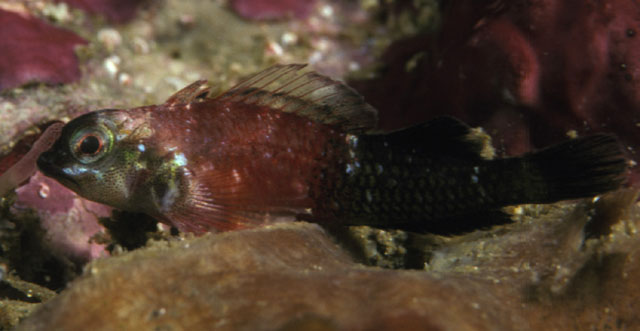| Tripterygiidae (Triplefin blennies), subfamily: Tripterygiinae |
| 3.2 cm SL (male/unsexed) |
|
reef-associated; marine; depth range 0 - 13 m |
| Western Central Pacific: Philippines, Malaysia, Indonesia, Vanuatu, New Caledonia, and Australia. |
|
Dorsal spines (total): 14-18; Dorsal soft rays (total): 8-10; Anal spines: 1-1; Anal soft rays: 16-21. Description: Male red on anterior half of body, black on posterior half. Female translucent greyish to yellowish green with red scale margins, white flecks on body, midlateral row of white spots on side of body, white snout tip, and white mark on cheek. Head, chest, and pectoral-fin base scaleless; small lobate or branched orbital tentacle; mandibular pores 2-4 + 2 + 2-4. Maximum size to 3.9 cm TL (Ref. 90102). |
| Adults are usually found in surge channels or on vertical encrusted rock walls, in tidal pools on reef crests (Ref. 27223, 90102) and areas with some wave action and abundant algal growth (Ref. 90102). Eggs are hemispherical and covered with numerous sticky threads that anchor them in the algae on the nesting sites (Ref. 240). Larvae are planktonic which occur primarily in shallow, nearshore waters (Ref. 94114). |
|
Least Concern (LC); Date assessed: 03 May 2010 Ref. (130435)
|
| harmless |
Source and more info: www.fishbase.org. For personal, classroom, and other internal use only. Not for publication.

